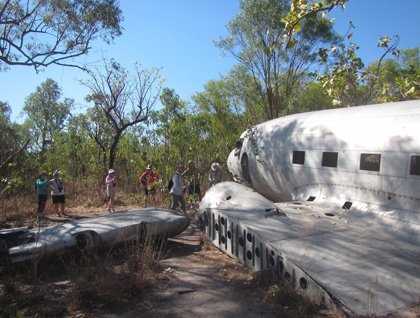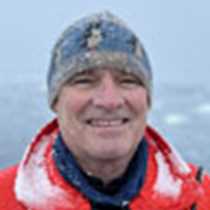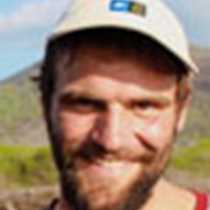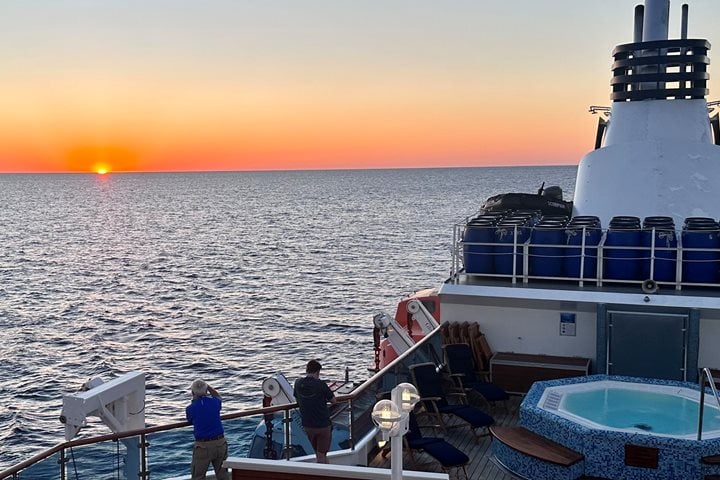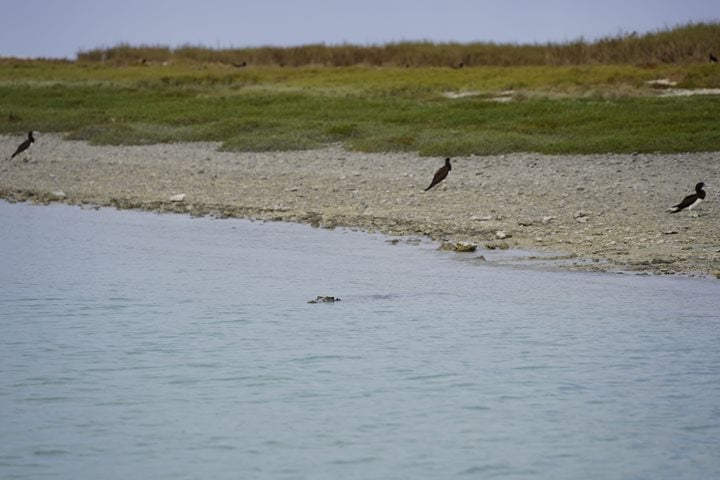Although it is one of the less visually spectacular Kimberley inlets, Vansittart Bay, a small remote bay of approximately 30 sq. km, is full of exploratory options. There is much history and pre-history to be had here and we would spend our day considering WWII, Philip Parker King, the Macassans, and the Bradshaws.
After breakfast we headed out in Zodiacs to a beach landing to the art sites of Jar Island. Ashore we scrambled, crawled, and climbed into the various Bradshaw art sites that Jar Island is known for. The viewing of this very specific Kimberley art, Bradshaw, or Gwion Gwion, is a rare privilege as we know little about it. It occurs nowhere else on earth.
Depicting elongated human figures dissimilar from Aboriginal art found throughout the Kimberley, the Bradshaw figures were named after the English pastoralist and explorer, Joseph Bradshaw. He made the discovery in 1891 whilst traversing the Prince Regent River area, searching for suitable grazing country.
Bradshaw figures are the most extensive primitive rock drawings in the world. In 1994, a technique using optically stimulated luminescence to date wasp nests that were built over Bradshaw figures showed the nests to be 17,000 years old. This finding provides a minimum age for these Bradshaw figures dating back to the last ice age.
The Bradshaw figures are usually mulberry in colour and appear to be “tattooed” or impregnated into the rock rather than painted on. They are usually very fine and very detailed. The can often be decorative and appear to be non-aggressive in ceremonial dance like positions.
After an adventurous morning we were back on the National Geographic Orion for a well-earned scrumptious lunch before venturing back across the bay to an indistinct beach on the Anjo Peninsula to view a downed C-53 Sky Trooper. After a pleasant stroll over a small sand dune and across a crab-infested salt pan, we found the downed wreck of a well preserved “bird.” The journey is as good as the destination in this case and there was time to wander around the bush and the salt pan to and from the plane wreck.
As the tide dropped rapidly we returned to the National Geographic Orion. After a brief break Dr. Mark Ziembicki held centre stage as we listened to his engaging talk entitled “The World’s Oldest Living Culture in an Ancient Land.”

